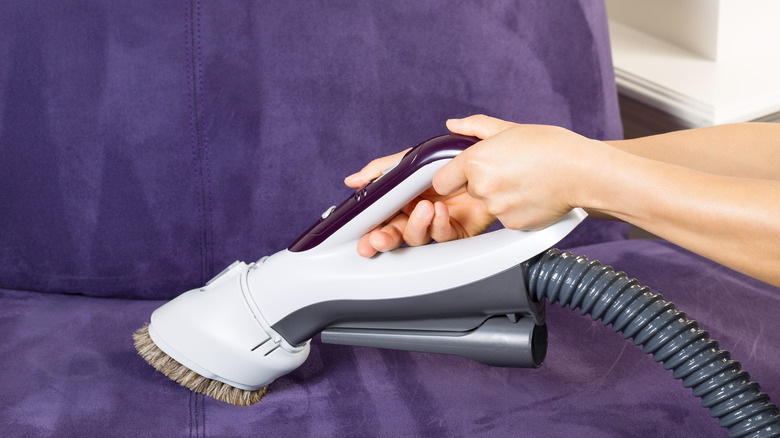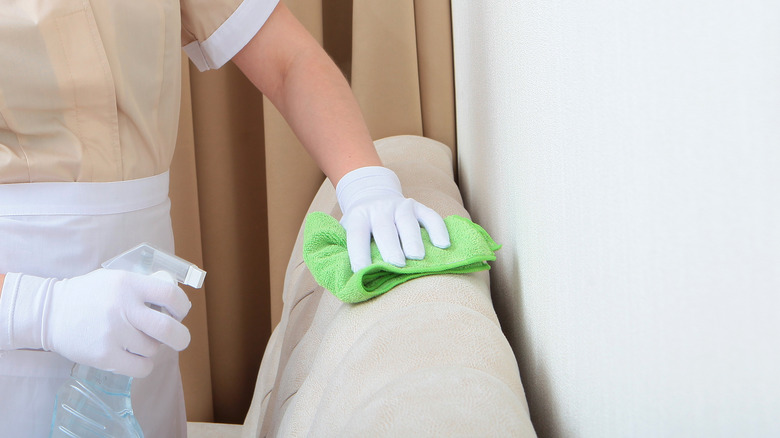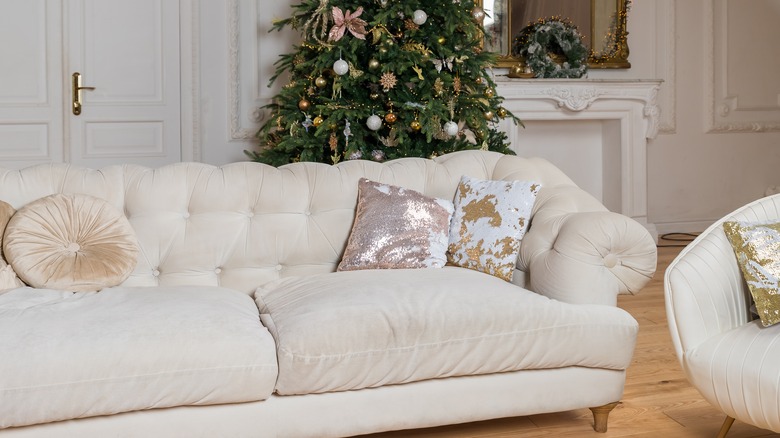Suede Fabric Is Making A Comeback. But Is It Worth The Hype?
Any fabric material you choose for a piece of home furniture should be durable enough for its intended use. The living room sofa, for example, should be made of a material that's able to withstand a high amount of wear and tear, whereas you can get away with a more delicate fabric for an armchair in a guest bedroom. Suede is one example of a delicate furniture material. Made from animal hide, it can feel plush and luxurious while adding a rich texture to the space it's used in. It has always been popular in specific circles because of this, but it's making a comeback according to interior designer Phoenix Grey. He advises against using it for furniture, however, because it requires a lot of care and maintenance.
"Genuine suede, which was used in the '70s and '80s, has started making a comeback. Yes, there are performance fabrics for this, but avoid the genuine one," he said on his TikTok. There's nothing like the authentic version of a material, but you have to work to maintain it. When it comes to genuine suede, the level of maintenance required isn't really ideal for furniture, especially in high-traffic areas, so it's worth considering other options.
Cleaning and maintaining genuine suede
Maintaining authentic suede generally involves two things. First, it needs to be protected from damaging impact and second, it needs to be treated properly if any damage does occur. A suede couch can be damaged by everyday things in the home like dirt, dust, water, and even direct sun exposure. When any of these come in contact with the material, they can spoil its appearance or leave permanent stains if not addressed quickly and properly. Keeping a real suede couch in good condition requires you to be proactive about avoiding spills and limiting exposure.
You also need to follow the care instructions and use the right products on real suede furniture. It's recommended to use a specialized suede stain remover and a suede brush. You can also use a homemade mix of water and white vinegar to slightly dampen a cloth and wipe down the surface, but water exposure on suede will always be tricky — in fact, Phoenix Grey doesn't recommend it at all.
Alternatives to consider
"Micro-suede or even the performance [suede] is going to be much more durable," says Phoenix Grey, via TikTok. Microsuede is made from polyester fibers while ultrasuede, the performance version of suede, combines natural and synthetic fibers. Ultrasuede mimics the feel and look of the real thing while eliminating the worry of surface damage. Even though these suede dupes are tougher, Phoenix Grey ultimately advises against them because their finishes don't last long.
The other fabric alternatives to consider will either be natural or synthetic. Cotton and wool are two natural fabrics that can be durable enough to withstand stains and wear while maintaining their color. Blends that incorporate synthetic materials like polyester or nylon also tend to be highly durable. Whichever material you choose for your furniture, just make sure you know its strengths and weaknesses, and how best to care for it. If you're still set on suede, try incorporating it in smaller doses — one or two throw pillows, for example. This will be much more manageable when it comes to cleaning and routine maintenance.


